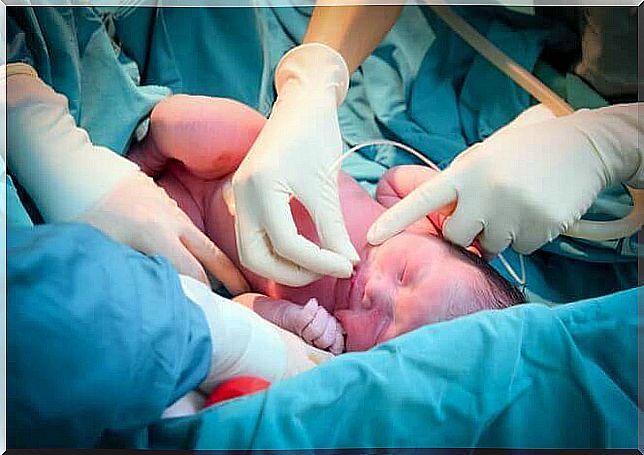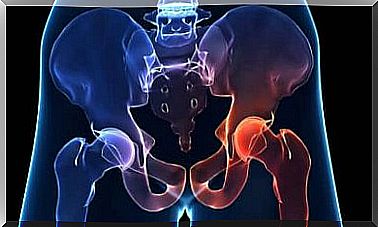Perinatal Asphyxia: What Are The Risk Factors?
Perinatal asphyxia is a very serious problem as it can kill the baby. Today we are discovering what causes it and what the risk factors are.

Perinatal asphyxia can arise before, during, and after the birth for a variety of reasons. The newborn suffers a lack of oxygen supply, which unfortunately can lead to death.
According to one study, around 20% of all babies who experience perinatal asphyxia die . Those who survive often suffer permanent neurological damage.
There are many reasons that can cause problems in a newborn, including factors before, during, and after birth. Today we tell you what the latest studies say about it.
One of the leading causes of death in newborns

The World Health Organization (WHO) has classified perinatal asphyxia as a leading cause of death in newborns. As a result, this problem now also gets more attention.
A baby with asphyxia before birth may need an emergency caesarean section. If doctors notice the problem after the baby is born, it is because the baby is not moving or crying. A basic sign of this is that the body appears limp.
In both cases, the medics need to act as quickly as possible. One has to keep a close eye on the baby and find out the causes of the asphyxia in order to save the newborn’s life.
How does perinatal asphyxia occur
It can result from different motives and it also depends on whether the asphyxia occurs before, during or after the birth. In the following we explain some situations to you.
Before birth
This type of asphyxia can occur during any month of pregnancy, but most often it appears shortly before birth.
That is why regular medical examinations are so important, because this is the only way to check that everything is in order. The following could be the cause of the problem:
- Anemia in the mother.
- Bleeding during pregnancy.
- The baby’s head is not in the correct position.
- Extended pregnancy (beyond the 42nd week)
- Infection of the mother.
During birth
A life-threatening situation for the child can also arise during the birth. The doctors are prepared for anything, but you should also find out for yourself what complications it can lead to.
- The umbilical cord can wrap around the baby’s neck or be constricted at one point.
- By preeclampsia the mother may suffer from elevated blood pressure.
- The mother suffers from a breathing problem.
- There are forceps used.
- The birth is delayed for a very long time.
After birth

Perinatal asphyxia can also occur shortly after delivery.
- It is a premature baby and the child’s organs are not yet fully developed.
- The baby has a congenital deformity.
- A lung or heart disease in the newborn.
- The weight of the newborn is very low.
If a newborn has mild asphyxia, it cries more than usual, appears irritable and has a somewhat stronger muscle tone. However, this problem usually subsides after 24 hours at the latest.
If the situation is more severe, however, it can lead to convulsions, a lack of sucking reflex (which is why the mother cannot breastfeed) and very weak muscle tone.
Neurological damage in perinatal asphyxia
Depending on whether the perinatal asphyxia was recognized and treated in good time, whether there were convulsions, there is also the possibility of neurological damage.
This arises if the asphyxia is not remedied in time or other factors come into play. For example, the risk of neurological damage increases if the child also has a cardiovascular or lung problem.
Another risk factor is acidosis, which means there is too much acid in the newborn’s blood.
Thanks to the examinations during pregnancy to perinatal asphyxia can prevent. However, there are also various circumstances that are simply uncontrollable.
This is why it is so important to have healthcare professionals present at birth who are familiar with these situations and other possible complications. Perinatal asphyxia can be fatal, so caution should always be exercised.









